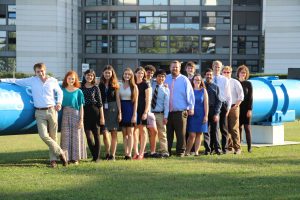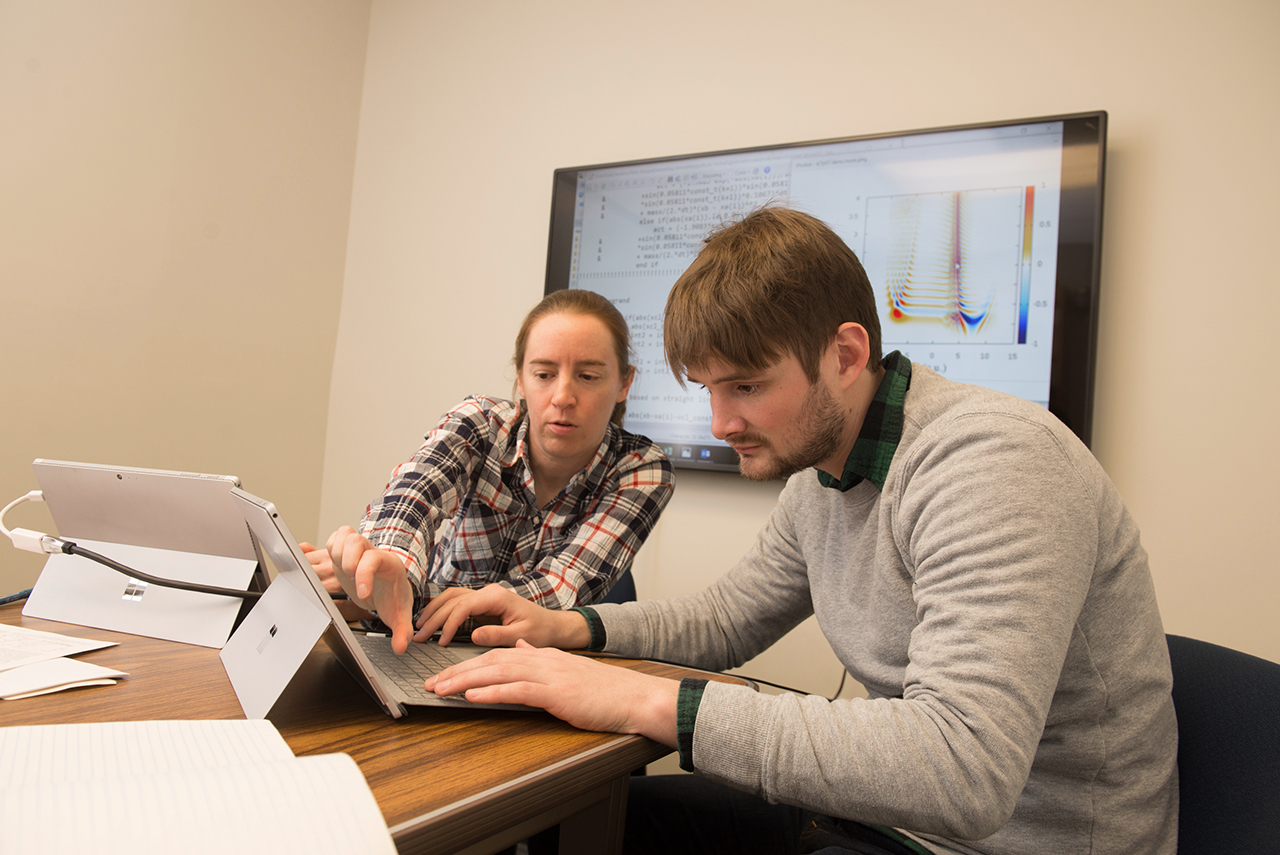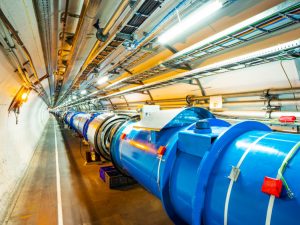Last summer, Illinois State senior Torrey Saxton researched at the largest particle physics laboratory in the world, working where just a few years earlier scientists had made the groundbreaking discovery of the so-called “God particle.”
Saxton, a Bone Scholar and triple major—physics, computational physics, and math—interned at the European Organization for Nuclear Research (CERN). He had been one of 15 students from the United States selected to participate in the National Science Foundation’s (NSF) Research Experience for Undergraduates (REU) at the international research center in Geneva, Switzerland.

Torrey Saxton (fifth from the right) with his peers at the world famous CERN laboratory in Switzerland.
“CERN has a very good reputation, and they do all of this exciting research in high-energy physics, so a lot of students want to go there,” said Illinois State Associate Professor of Physics Allison Harris. “As far as I know, (Saxton) is the first Illinois State student who has gotten accepted into the program.”
Saxton, a recipient of the Goldwater Scholarship, has been researching quantum and computational physics with Harris since he arrived in 2016 at Illinois State as a transfer student. Saxton described their work as a very collaborative effort.
Saxton assists Harris in writing the computer code for whatever research they are working on, and then they discuss and analyze the results. Harris’ research of atomic collisions focuses on the fundamentals of how particles and atoms interact. CERN researchers also study collisions; however, their particles have higher velocities than the ones Harris and Saxton study.
“The research I do with Dr. Harris is quantum in nature, and it involves atomic scattering problems,” Saxton said. “So the main way that it prepared me for research at CERN was it gave me a whole bunch of computational tools to use.”
CERN has a grand mission: “to uncover what the universe is made of and how it works.” The research center is home to the Large Hadron Collider, the world’s most powerful particle accelerator, which was used to find the Higgs boson, or the God particle, in 2012. This subatomic particle verified how elementary particles get their mass.
Saxton’s internship at CERN ran from June to August of last year. He returned to Illinois State only a few days before the fall semester began.
Saxton’s main duty at CERN was to work with deep learning neural networks. These are algorithms modeled after the human brain that recognize patterns. Those networks were designed to identify decay modes of tau leptons, which are subatomic particles similar to electrons but heavier. The goal was to have a well-trained network that was applicable to the real data that was collected.
“My job was to try to make that network as sufficient as possible,” Saxton said. “The network being 90 percent efficient means nine times out of 10 it’s correct and one time it will misclassify something.”
Saxton said his internship showed him how research is conducted in an environment such as CERN, where fundamental research is the sole focus. He also learned Python, a programming language that is becoming heavily utilized in research.
Saxton applied for the highly selective internship on a whim. The interview process consisted of a Skype call with scientists from CERN.
“I think it shows what we all know and understand is that we’re one of the top undergrad programs in the country.”—Allison Harris
“They wanted to know where I had struggled a little bit because I got a 4.0 GPA,” said Saxton. “They were like, ‘That doesn’t really tell us anything about you. What are your strengths and weaknesses?’”
Saxton had to beat out applicants from such highly touted schools as Harvard University, Stanford University, and Massachusetts Institute of Technology (MIT).
“I think it shows what we all know and understand is that we’re one of the top undergrad programs in the country,” Harris said. “It’s a great thing for us that people over there have worked with someone from ISU and know that the students that we’re putting out as graduates are qualified and know what they’re doing.”
Saxton has recently been selected to participate in the Los Alamos National Laboratory Computational Physics Workshop this summer after he graduates from Illinois State in May. He plans to attend graduate school to study physics at one of the 13 schools to which he applied. Saxton’s long-term goal is to return to Illinois State as a physics professor.
Maggie McReynolds can be reached at mamcrey@IllinoisState.edu.


